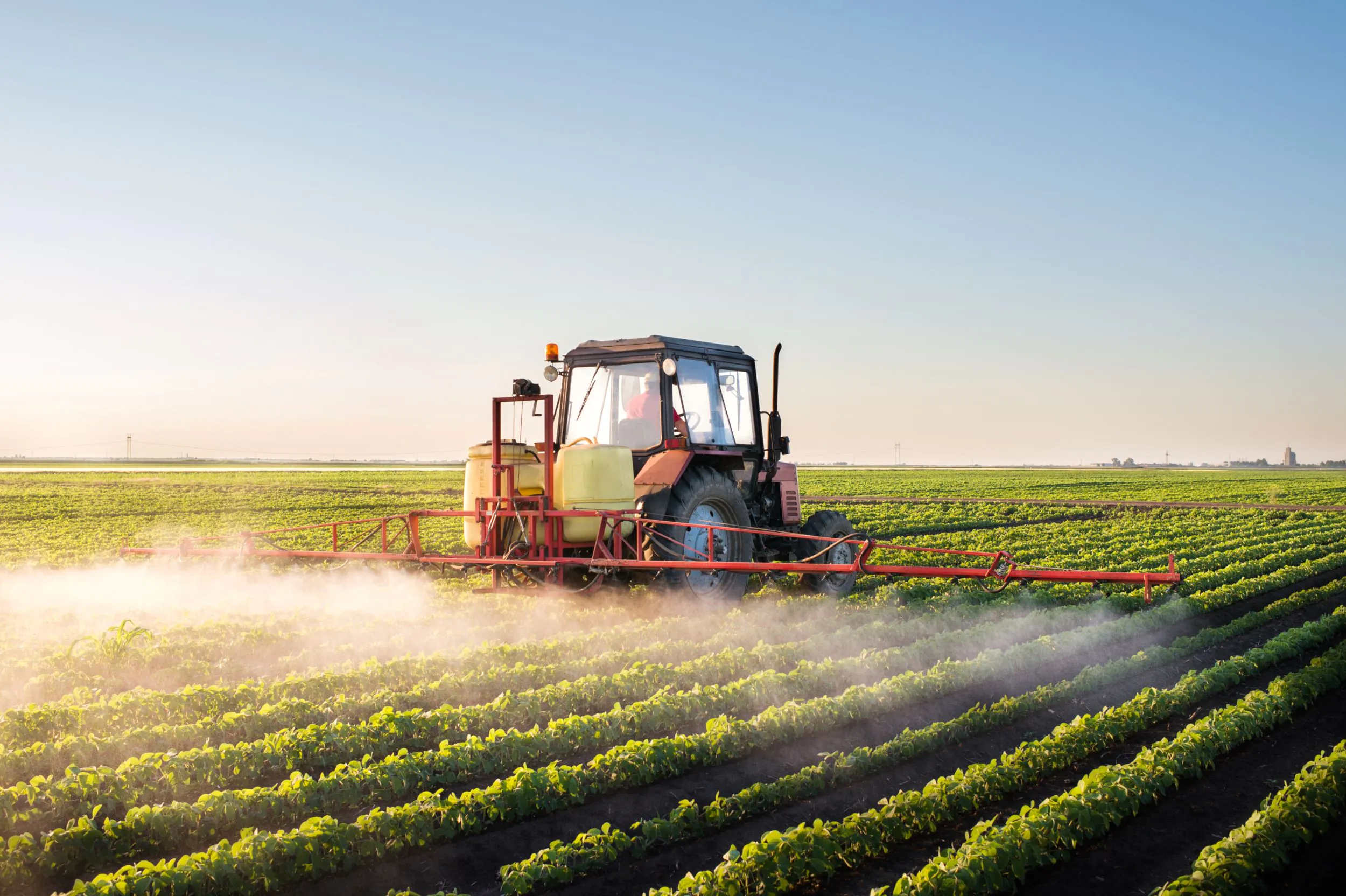The market for agricultural crop protection products is growing and evolving. The demand for various agricultural products continues to grow with the world’s rising population and increasing urbanization, driving a continual demand for crop protection chemicals and related products. However, the types of products in demand are changing as regulations around hazardous pesticides tighten and consumer preferences lean more strongly towards “natural” and “organic” product labels. A producer’s choice of crop protection products can impact not only their yield but the popularity of their offerings, and pesticide manufacturers need to take these factors into account when making decisions about their product lines.
Crop Protection Products Market Overview
The global crop protection chemicals market is currently valued at $66 billion and is expected to exceed $80 billion by 2028. Pesticides, insecticides, and herbicides are the three primary types of crop protection chemicals, with herbicides accounting for roughly half the market in terms of volume.
All of these products are designed to reduce or prevent crop losses in various ways, by removing harmful pests and weeds and by protecting the crops against disease. They can be made from synthetic or biological substances, and there are currently roughly 800 chemically active compounds being used for crop protection around the world.
While the growing prevalence of organic farming practices and the tightening regulations around chemical use are decreasing the viability of certain products, alternatives such as bio-based pesticides are enjoying a substantial increase in demand and helping drive growth in the market. Bio-pesticides come from natural sources such as plants, animals, bacteria, and minerals. They are usually less toxic than traditional crop protection chemicals and therefore have little or no impact on human health and on the surrounding environment.
Global Usage of Crop Protection Products
The Asia-Pacific region is the largest consumer of crop protection products due to its high populations and large agricultural base. The leading countries in the region are China, Japan, India, and Australia. There is an increasing emphasis on organic products and bio-pesticides in the region as well, leading to a shift in demand for various types of crop protection products.
This shift isn’t uniform, however, and some countries rely more heavily on synthetic pesticides than others. India, for example, has high demand for food grains but limited arable land, and uses synthetic crop protection products in order to compensate for various challenges and risks that its farmers face. Meanwhile, Japan is increasing its focus on protecting soil, water, and biodiversity to improve its agricultural sustainability, and businesses in the country are busy developing new and advanced products to further this goal.
North America is also increasing its investment in bio-pesticides, as consumers and governments alike become more focused on environmental protection and healthy products. The US government, for example, is providing subsidies and other support for organic agriculture and is encouraging the adoption of bio-pesticides on farms.
The European Union in particular is working to reduce usage of harmful agricultural chemicals, creating significant demand for bio-pesticides in the region. The European Green Deal has set a target of reducing the use of chemical pesticides — particularly the most hazardous ones — by 50% by 2030 and the EU approved the Sustainable Use of Plant Protection Products Regulation (SUR) in 2022 to create binding legislation on the matter. Several countries in Europe have therefore begun developing programs to support the adoption of bio-pesticides and reduce reliance on more harmful crop protection chemicals.
Environmental Protection in the EU
While all pesticides are to some degree harmful, as they are designed to kill things like pests and weeds, some are harmful enough that they pose significant threats to humans, to biodiversity, and to the environment at large. Those pesticides that are the most harmful are designated as highly hazardous pesticides (HHPs). HHPs represent a relatively low percentage of crop protection chemicals and are used most frequently in lower- and middle-income countries. Acting to reduce HHPs has been found to significantly reduce harm to humans and to the environment.
Europe still relies heavily on chemical pesticides in the agricultural sector, and sales have therefore been stable for over a decade. Pesticides are also used in forestry, along roads and railways, and in parks, playgrounds, and gardens. Recently the presence of pesticides in rivers and lakes has become a concern, as has soil pollution. Children are at higher risk from pesticide exposure, and these chemicals have been linked to several chronic diseases in humans as well as developmental delays in children.
Regulations proposed by the European Commission are designed to promote the use of environmentally friendly pest control systems and to restrict the use of pesticide in sensitive areas. Measures may include incentivising the adoption of precision and organic farming as well as taxes on the most hazardous pesticides.
There have been some concerns that these measures in the EU would have a drastic impact on agricultural yields: decreasing supply, raising prices, and forcing European countries to reduce exports and rely more heavily on imports. However, these concerns often hinge on worst-case scenarios and don’t necessarily take into account measures that can be taken to counterbalance the pesticide reduction or the ecological benefits of such a reduction.
For one, not all pesticide reduction needs to come from the agricultural sector. Reducing usage in sensitive areas such as urban areas and roads will not impact crop yield, and while these areas may constitute a small percentage of pesticide use across sectors, making cuts here will still take some pressure away from food and feed production.
The use of crop protection chemicals also varies depending on the type of crop. This means that countries can target specific crops that account for high volumes of pesticide use or high risk from specific pesticides, while having minimal impact on other crops. These crops may also benefit from alternative crop management practices that will benefit yields without the use of chemicals. Bio-pesticides will also be of benefit here, and will likely receive a significant boost in demand because of it.
Measures such as the ones being implemented by the EU will certainly impact manufacturers of crop protection products. However, the falling demand for HHPs and other risky products also leads to higher demand for bio-pesticides and other low-toxicity products. Demand for food and animal feed will remain high as both populations and average incomes rise, and products to protect crops and improve yield will therefore remain essential to the global market.



